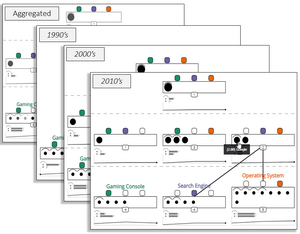Die Arbeitsgruppe zieht um!
Wir wechseln im Wintersemester 2021/22 an die Universität Bamberg. Ab 15. Oktober 2021 übernimmt Fabian Beck den dortigen Lehrstuhl für Informationsvisualisierung.
Neue Webseite der Arbeitsgruppe: https://www.uni-bamberg.de/vis
Publikationen
Publikationen der Arbeitsgruppe, die seit 2016 erschienen sind. Frühere Publikationen von Fabian Beck sind auf Google Scholar oder DBLP zu finden.

Art der Publikation: Beitrag in Sammelwerk
Visualizing Sets and Changes in Membership Using Layered Set Intersection Graphs
- Autor(en):
- Agarwal, Shivam; Tkachev, Gleb; Wermelinger, Michel; Beck, Fabian
- Titel des Sammelbands:
- Proceedings of Vision, Modeling, and Visualization
- Verlag:
- The Eurographics Association
- Veröffentlichung:
- 2020
- ISBN:
- 978-3-03868-123-6
- Digital Object Identifier (DOI):
- doi:10.2312/vmv.20201189
- Volltext:
- Visualizing Sets and Changes in Membership Using Layered Set Intersection Graphs (2,67 MB)
- Vortrag zu dieser Publikation:
- Vision, Modeling, and Visualization 2020
- Aufzeichnung:
- https://www.youtube.com/watch?v=hG_ioaZ2DEg
- Zitation:
- Download BibTeX
Kurzfassung
Challenges in set visualization include representing overlaps among sets, changes in their membership, and details of constituent elements. We present a visualization technique that addresses these challenges. The approach uses set intersection graphs that explicitly visualize each set intersection as a rectangular node and elements as circles inside them. We represent the graph as a layered node-link diagram using colors to indicate the sets. The layers reflect different levels of intersections, from the base sets in the lowest layer to potentially the intersection of all sets in the highest layer. We provide different perspectives to show temporal changes in set membership. Graphs for individual, two, and all timesteps are visualized in static, diff, and aggregated views. Together with linked views and filters, the technique supports the detailed exploration of dynamic set data. We demonstrate the effectiveness of the proposed approach by discussing two application examples. The submitted supplemental material contains a video showing proposed interactions in the implementation and the prototype itself.
